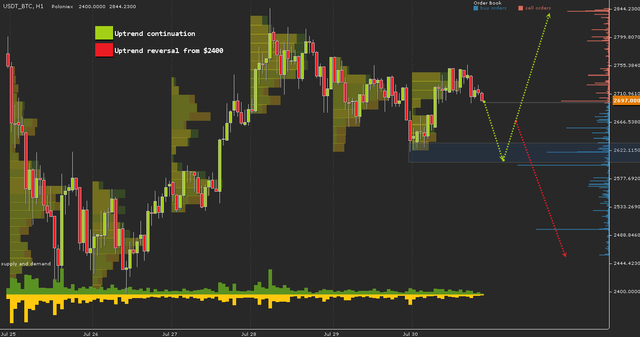
Bitcoin is an online payment application that has been available since January 2009. Created by the Free Community, it evokes the World Wide Web, the Internet application whose success has paved the way for so many others. The Web has revolutionized the sharing and production of knowledge; Bitcoin transforms social consensus around monetary creation, paving the way for a new economic freedom.
The relevance of complementary currencies has been strongly emphasized by the emergence of a globalized and financialized economy, in which governments are struggling for growth and trade surpluses. Until 2009, the moves towards monetary reform revolved around mechanisms orchestrated by governments and the banking system. With the introduction of a new universal currency, combined with the transformative power of the web, new solutions can be explored for social and economic reforms: in this sense, a universal currency like bitcoin allows redefining money.

The transaction database bitcoin
The bitcoin protocol specifies how to build and manage an online transaction database. Transactions are published and signed electronically (using asymmetric cryptography and key pairs). The protocol requires a validation of all transactions by the nodes of the network.
Since all transactions in the database are linked together by cryptography, which is why the bitcoin database is often referred to as a bitcoin "string", any change to a past transaction would require a new calculation of the string From this transaction.
The signatures by private keys guarantee the ownership of any bitcoins received on a bitcoin address: the knowledge of the private key associated with the reception address is necessary to subsequently spend all or part of the amount received. The transaction database holds all the information necessary for an address owner to receive and spend any bitcoin: the database and the communication protocol give rise to a new electronic currency.
The monetary creation of bitcoins
Moreover, the bitcoin protocol also provides for a monetary creation mechanism. Bitcoins are gradually generated by the network up to 21 million units. Bitcoins are created ex nihilo, as a commercial bank creates money ex nihilo by issuing debt, for example by lending to the buyer of a dwelling. Housing exists before the loan. The seller, who leaves with the money, transfers de facto ownership of the housing to the bank. But in reality, the bank has taken out money from a hat: it has recorded in its liabilities the amount of the loan it deposited on the buyer's current account. The same amount is recorded on its assets, as debt owed by the buyer. Even the great bankers and economists, including the Nobel Prize winner Maurice Allais, call it magic.
Bitcoin is based on the recognition that this monopoly of monetary creation deserves to be reconsidered, if only because it has lasted for several hundred years. In a context of repeated financial crises, bitcoin allows us to experiment with a new concept of money.
As a universal currency, bitcoin represents a genuine innovation based on many previous attempts to create a sustainable currency, but above all, independent of centralized states and organizations.
Towards the development of a bitcoin economy?
Some bankers with whom I have spoken want to ignore this innovation on the grounds that the value of bitcoins would not be based on any tangible assets in the real economy. But thanks to the many traders who now accept bitcoins, as well as online transactions that are made in bitcoins as with any other currency, we are witnessing the emergence of a true bitcoin economy. If the euro or dollar market collapses, the principle of recapitalization by central banks is based on the assumption that national governments have unlimited taxing power over the economies of each country. The current crisis in Greece, the euro zone and, to a lesser extent, the United States, shows how fictitious the use of this theoretical power is. The reality is that 90% of the currency is created to date in the banks 'registers and that price stability remains the only determining factor for the central banks' position to remain democratically defensible.
Today, there are more than 140 state currencies in the world. It is difficult to believe that a new complementary currency will suddenly jeopardize the prospects of the world economy on the sole basis that this currency is decentralized. The innovative aspect of bitcoin, which classifies it separately in all that has been before, is based on a very simple basis: it is online money, which requires neither central authority nor intermediaries. As such, bitcoin arises as a convincing challenger of other methods of transaction in cash. However, freeing oneself from necessity does not mean eliminating the usefulness of so-called trusted intermediaries. Managing transactions between merchants and customers will always include the demand for a dispute management system, regardless of the currency used for payments. But there are many instances where both parties of a payment can trust each other and do not need a commissioned third party.
E-gold, an attempt to create a universal currency based on gold, was created in 1996 but was not successful, partly because the system was based on a central inventory management organization, gold. The amount of gold required increased with the E-gold economy, which proved inadequate, dangerous and fundamentally unnecessary in the digital age (another major flaw in E-gold was the lack of protocol Specific: relying solely on a web browser for irreversible transactions poses serious security problems).
The monetary mechanism of bitcoins mathematically simulates the extraction of a precious metal. Moreover, its protocol consists of an electronic signature system combined with encryption algorithms that have proved themselves in banking systems, recognized and published by the US Department of Defense.
The growth of money supply over time
Bitcoin can be considered as a convertible currency not in gold but as a virtual substitute for gold, since the quantity of bitcoins is limited asymptotically, from conception, to 21 million bitcoins.
Like gold, bitcoins can be equated with bonds without maturity. But unlike gold, bitcoins can be divided indefinitely and involve no storage costs. According to GFMS estimates, at the end of 2010, the stock of gold extracted amounts to 166,600 tons, which at the average price of 2010 represents 6,500 billion dollars of which 2400 billion are reserves Private or official, in the form of coins or bullion. The total stock minus the 30,000 tonnes corresponding to the world's official reserves in August 2011 gives us an estimate of $ 1230 billion for the gold market as a store of value. If we were to calculate a bitcoin exchange rate with the dollar on the basis of these figures, we would get an exchange rate of $ 600 for 1 BTC, if the bitcoins represented 1% of the private market for gold as an instrument cover.
Similarly, if the Bitcoin economy were to grow by 5% of US GDP (ie $ 725 billion) and assuming a bitcoin monetary velocity of 50, equivalent to Dollar for small amounts, a bitcoin would represent the equivalent of $ 700.
That would be equivalent to a projected value of $ 15 billion for the bitcoin network. This is an order of magnitude consistent with the market capitalization of Visa, Inc. ($ 55 billion) or MasterCard ($ 39 billion). Buying bitcoins today means buying shares for a new global network of electronic transactions. At $ 10 in August 2011, a bitcoin valuation of $ 210 million, bitcoins are clearly undervalued even assuming other universal currencies could compete.
One could imagine that such an assessment would push an investor to acquire the most powerful computer in the world (the "K-computer" in Japan, in June 2011) to take control of the bitcoin network. However, such a maneuver would only temporarily shun basic participants - the "miners" - and greatly reduce the liquidity of the bitcoins as long as the attack lasted. The supercomputer would remain stationary, discouraging potential vendors and repelling intruders. In other words, in order to mitigate the risks, this new actor will have to acquire a sufficient quantity of bitcoins in order to keep the economy afloat afloat after the holdup, hoping however that buyers would return after this transition Somewhat chaotic ...
Moreover, at the very moment when the attack is ready, it is not said that such a supercomputer would be up to the power of hashing current nodes, whose cumulative power increases day by day. Given the uncertainty surrounding the outcome of such aggressive maneuver, it is much more reasonable for a rational investor to simply buy bitcoins in exactly the same way as he would buy the shares of a start-up .
Another, even more naive, form of attack would be to buy mining pools within the bitcoin network. By joining a pool, a minor receives a fraction of the stream of bitcoins generated by the pool, in exchange for the combined hash power of the team. The share of a minor is calculated on the basis of its contribution to the computing power of the pool.
A minor, alone, can undergo a long desert crossing before winning the 50 bitcoins reward associated with the calculation of a new block integrated into the bitcoin chain of transactions. Statistically, the expectation of gain is the same, only, the pay is more regular when one is part of a pool. As a result, a miner has no interest in staying within a pool led by a hostile investor. The miner would simply change pools or start solo mining.
This analysis remains true even after all the bitcoins have been "hit". In fact, the incentive to undermine blocks of transactions, ie to participate in their validation by the network, will be maintained by the increase in the number of transactions combined with the increase in the value of the bitcoins. A self-regulated system with a permanent incentive system.
Electronic money and confidence management
Bitcoin is not only based on this type of projection but also on the confidence created by the nodes of the network, materialized by the combined computing power of a group of people. Anyone, equipped with a personal computer with a graphics card (GPU), can join this giant transaction validation team, defined by the bitcoin network. Simply download a free "mining" program that will work according to the rules of bitcoin monetary creation. There are now tens of thousands of "minors" in the world.
Bitcoin validation does not require a secure trusted network since it relies on the fact that the majority of computing power is held by honest users: by "honest" we refer to the simple fact that they cooperate with each other Confirm the legitimate transactions of the network. These legitimate transactions of the bitcoin network are those that can be mathematically linked to the original transaction via the longest string: the length of the string refers to the calculation depth of its validation, not the number of blocks of transactions. The zero transaction took place on 3 January 2009: it was the transaction that gave rise to the system at the base of the transaction chain.
This concept of cloud computing applied to the confirmation of transactions has many consequences: only two years after its launch, the bitcoin network represents the equivalent of the computing power of the "K-computer". Owning the network with such a machine would not necessarily mean a total shutdown of the network. Rather, it would greatly disrupt the confirmation of transactions until the participants find a way to counter the attack and regain control of the operations. Recovery plans would then be implemented to resume normal course of operations thereafter. In other words, even assuming that a government or a large organization can one day arm itself with enough computing power to thwart the bitcoin network, the outcome of such an operation would be, at best, uncertain. This property gives the bitcoin network an unmatched resistance capacity.
Decentralization and deflation
By definition, a real universal currency must be able to be launched without any central authority regulating its money supply: this excludes at the outset any form of correlation between money supply and macroeconomic indicators. Such a correlation system generated endless discussions and demanded utopian governance according to a universal democratic standard unknown to date.
For the same reason, the payment software, the electronic purse, must be absolutely free, open source and free, to escape the limitations and opacity of a proprietary program. As Richard Stallman, one of the founders of the free software movement, said: "either the users control the program or the program controls the users."
To a very large extent, state-supported currencies, such as the euro or the dollar, are created in a black box, with a lot of attention paid by the media to interest rates rather than mass monetary. A central organization promoting a monetary system based on a proprietary program would not change the situation.
As a result, the mechanism regulating the money supply must be listed and published from the outset in the specifications, without any space for the new currency to escape from it whatever happens.
Similarly, it is neither possible nor necessary to predict the rate of adoption or growth of the user base for this new currency: these figures can not be determined with precision. The monetary creation model must therefore define a maximum amount of money, unless the creation rules are tied to the number of users by a user authentication protocol. This protocol would in no way be compatible with the objective of decentralization, since user authentication implies, by definition, issuing identity certificates, using a trusted network or a certification authority .
The bitcoin specifications meet the requirement of a limited money supply. In addition, they provide a transaction fee to sustain the interest of minors over time, even after the rewards for creating new blocks of valid transactions have fallen to a level close to zero.
Because they are exchanged electronically, the bitcoins, unlike gold, are infinitely divisible and allow a high monetary velocity. Thus, a strong deflation of prices would only limit a bitcoin to a reserve role of value, more practical than gold. In fact, deflation of prices would only have an adverse economic effect if bitcoins were the exclusive motto of a given geographical area. This is absolutely not the case since, as a complementary currency, the bitcoins coexist with the local currency sponsored by the State, without seeking to replace it. Prices in local shops will continue to be expressed in local currencies. In an on-line electronic transaction, the price expressed in the universal currency can easily be adjusted in real time against a variable exchange rate. It is only for transactions that are not online that price stability is a requirement for any universal currency.
In short, price deflation increases the attractiveness of bitcoins as a safe haven and only marginally affects its application as a medium of exchange.
conclusions
In a globalized economy, the birth of one or more universal currencies is inevitable since it is technologically feasible and economically desirable.
Bitcoin, as the first motto of the genre, has largely opened the way to new applications. In particular, bitcoin can greatly improve the efficiency of remittances where it is most needed, especially for development aid, which has long been regarded (in the words of the economist Peter Bauer) as "excellent How to transfer money from the poor to the rich in poor countries. " Bitcoin can take advantage of the widespread use of mobile phones in developing countries to transfer money directly, without going through intermediaries, whether bureaucratic or banking. The institution or non-governmental body responsible for the transfer will simply assign bitcoin addresses to the recipients and local merchants will be able to make money transfers and payments in bitcoins.
This technology allows both a new type of transaction on the network and a new universal currency.
By analogy, it is interesting to note that the governance of the World Wide Web is governed by a non-profit organization - the W3C - made up of 300 members among the largest companies in the high-tech sector. Clearly, any support from one government to one of the W3C members may be counterbalanced by the others if it is not in the public interest. If this principle succeeds in regulating an area where technology is used in new ways of producing and sharing knowledge, it is hoped that a similar organization can also oversee the technical characteristics of the bitcoin protocol. This would allow bitcoin to preserve its integrity and innovation potential in the face of the vagaries of macroeconomic measures.
In conclusion, I hope that my explanation has benefited you
Thank you for visiting my blog @informatique-pro

Why is this tagged 'bitcoincash' when you have no information about it?
Downvoting a post can decrease pending rewards and make it less visible. Common reasons:
Submit